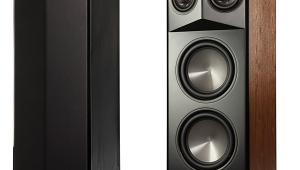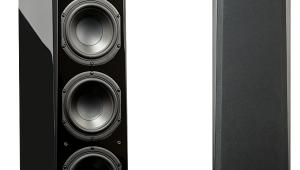PSB Image T6 Speaker System Page 2
Listening: Music
With good program material, and in two-channel mode without the sub, the Image T6s performed well above what I’d expect at their price level. When I compared them with more expensive speakers, they gave up a little refinement, but I enjoyed what I was hearing too much to give it much thought. They handled vocals particularly well. The Image T6’s open midrange was a delight on all sorts of music. It didn’t have any boxiness, nasality, or other obvious colorations to remind me that I wasn’t listening to the real thing.
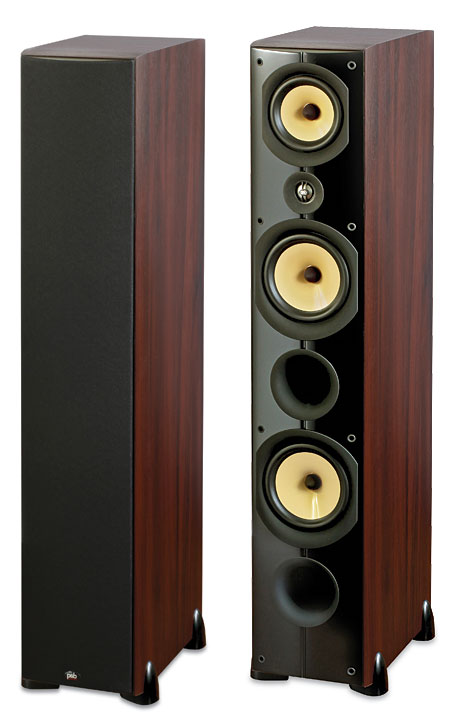
Most speakers image well in my setup, and the PSBs were no exception. They precisely positioned centered vocals and instruments, so that most listeners would swear the center speaker was on—when it was not. Depth, if present in the recording, was also convincing.
When you feed the Image T6 good material, the top end also shines. The Image T6 captured the subtle fingering details on guitar strings, delicately brushed cymbals, and the spaciousness of a reverberant recording venue. I never felt like I was missing anything, or that the treble was too bright or over the top. While the treble couldn’t quite match the inner detail and airiness that the best speakers convey, there wasn’t anything obviously missing. In fact, these speakers were lighter on their feet and less warmly balanced in my room than my recollection of the Synchrony and Imagine models that I recently reviewed (HT, December 2007 and May 2009). In fact, they could be a bit unforgiving in the low treble. But this was a sometime thing, and I only noticed it on overly bright music recordings or soundtracks played at relatively high levels.
The Image T6s alone were effective on loud bass transients like bass drums. Still, in my setup, with the speakers positioned relatively far from any adjoining walls, I wouldn’t describe them as full bodied. Surprisingly, third-octave in-room measurements showed some excess output between roughly 60 and 80 Hz, which was not obvious in listening. There was solid response down to about 40 Hz with a sharp drop-off below that, which was consistent with what I heard. (Closer wall positioning will help shore up the sub-40-Hz in-room response, but that could trigger other tradeoffs, as near-wall positioning often does.)
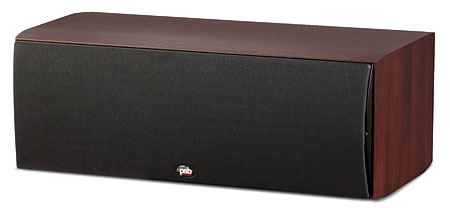
Fortunately, the Image T6’s slightly lean balance in my room helped it blend smoothly with the SubSeries 5i. This extended the effective in-room response, at average levels, to a hair below 30 Hz. The SubSeries 5i isn’t a monster sub, but it performed admirably on most material. While I couldn’t always hear the improvement over the sound of the naked Image T6s, it was a plus when I could hear it. I only heard overhang or boom on rare occasions, and with some very low-frequency material. This will usually depend as much on the room and placement as it does on the SubSeries 5i itself. This is a fact of life with even the most expensive subwoofers. This is especially the case when you use the sub without equalization, which I did here.
Listening: Movies
The Image T6 impressively handled music, but it sounded even better with the entire system fired up for some of my favorite movies. I experienced more than a few of the films for the first time. The sound was as big, clear, and open as the most active soundtracks demanded. It didn’t have the excessive brightness and overly forward balance that can make your speakers turn-it-down unpleasant and aggressive. On big action epics, the system played as loud as I could ever want in my medium-sized room, and it revealed only a rare trace of strain.
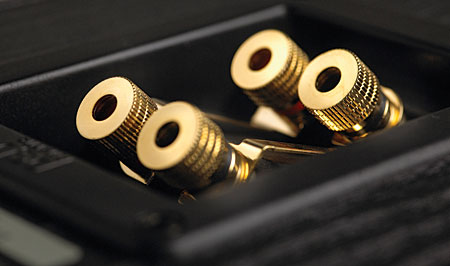
The Image C5 center speaker’s balance with pink noise (the most challenging test) didn’t match the sound of the left and right speakers as well as I would have liked. It was less open, warmer, and had a bit more coloration than the T6s. Still, that’s a common problem with dissimilar center speakers, and it was rarely audible on real source material. More significantly, I was happy to find that off-axis-response irregularities were relatively unnoticeable here. These can plague two-way, woofer-tweeter-woofer horizontal center-channel designs and degrade their balance and reduce dialogue intelligibility. These problems will show up most noticeably for listeners who are seated off of the center axis. We’ve never tested a center speaker of this design type that didn’t have off-axis suckouts. Still, the system produced clear dialogue and a uniformly balanced front soundstage at seating positions up to 25 degrees off axis. That’s sufficient for everyone sitting on an average-size sofa that’s positioned 10 to 12 feet from the speaker.













